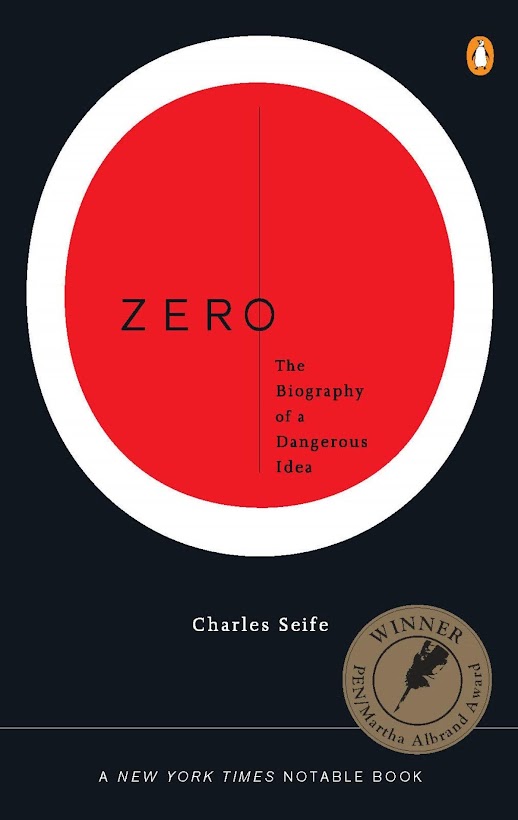Zero (2000) is the compelling tale of a figure disallowed by the ancient Greeks and revered by ancient Indians. Zero – along with its companion, infinity – is a digit that has played a significant role in both mathematics and philosophy throughout the ages.
- Commencement: Uncover the chronicle of a heretical digit
- Zero did not exist in the earliest days of mathematics
- Philosophically inclined ancient Greeks spurned zero despite its utility
- Ancient Indian and Arabic mathematicians embraced zero and achieved monumental mathematical progress
- Integrating zero in the Occident posed theological challenges, nevertheless, it facilitated a mathematical revolution: calculus
- Mathematicians promptly unearthed the intricate but captivating relationship between zero and its antithesis, infinity
- Zero and infinity are not merely mathematical concepts — they are abundant in physics as well
- Summary
- About the Author
Commencement: Uncover the chronicle of a heretical digit
Zero is a peculiar type of digit. It’s not quite like 4, or 32, or 83.
When you incorporate zero with other digits, nothing changes. When you multiply other digits by zero, you invariably obtain zero in return. And when you attempt to divide by zero, chaos ensues.
It’s such an unconventional digit, in truth, that many esteemed mathematicians in the ancient era refused to acknowledge its existence entirely. And, in contemporary times, even the philosopher René Descartes maintained it was not genuine.
Nonetheless, following its eventual recognition, it has been discovered at the core of virtually every advancement in math or physics. How so? You’re on the brink of discovering.
In these digests, you’ll understand
- why the Babylonians introduced zero;
- why Aristotle prohibited it;
- why infinity is the counterpart of zero.

Zero did not exist in the earliest days of mathematics
Can you envision a world devoid of digits?
In the Stone Age, that’s how things were – until some innovative cave dwellers commenced notching onto a wolf bone.
What were they tallying? That remains a mystery. Yet, it likely pertained to something pragmatic, such as animals or spearheads. Since prehistoric mathematics was strictly pragmatic, there was no necessity for the notion of zero. A unique term for “zero” deer was unnecessary; there simply … were no deer.
However, as time progressed, mathematics advanced, and individuals developed intricate counting systems. The ancient Babylonians eventually realized that something – or rather, nothing – was absent.
This is the principal point: Zero did not exist in the earliest days of mathematics; it originated in ancient Babylonia.
To grasp why Zero made its debut, you will need to comprehend how the ancient Babylonian counting system operated. Here’s a brief breakdown.
You are most likely aware that our contemporary counting system is decimal, or in base 10: we group elements into 1s, 10s, and 100s. Conversely, in ancient Babylonia, the system was sexagesimal – it was in base 60. Astonishingly, it solely featured two symbols.
These two symbols represented “1” and “10.” The Babylonians merely repeated those symbols as needed – analogous to the subsequently renowned Roman system. For instance, fifty would be five times the “10” symbol; fifty-one would be identical plus a “1” symbol – and so forth, until it reached 60.
Here’s the perplexing part: at 60, they would recommence with the “1” symbol. Sixty and 1 were indicated by the same symbol. Likewise, 60 times 60, or 3,600.
If you discern that this appears ambiguous, you are correct. Particularly concerning numbers like 61 and 3,601. Both were represented merely by two “1” symbols, adjacently. How would you differentiate between them?
Ultimately, the Babylonians devised a solution: zero. To inscribe 3,601, they introduced a completely new symbol between the two “1” symbols; this clarified that the initial digit was not 60 but a degree higher. This marked the genesis of zero.
Notwithstanding, this was not exactly our current-day zero. Essentially, it functioned solely as a placeholder indicating an absence. It was only afterward that the peculiar, mystical characteristics of zero would be fully unveiled – much to the astonishment, and dread, of the ancient Greeks.
Philosophically inclined ancient Greeks spurned zero despite its utility
For many ancient societies, numbers served solely as tools for computation and dividing land. Conversely, for the ancient Greeks, numbers constituted an entire philosophy. Mathematician-philosophers like Pythagoras observed a symphony of numbers within every shape.
Nevertheless, the ancient Greeks did not embrace zero – not in the least. In truth, Aristotle proclaimed that it simply did not exist; it was merely a figment of human imagination. His stances on this topic, as on innumerable others, reverberated through the eons – to the detriment of mathematics in the Western sphere.
The central idea here is: Philosophically inclined ancient Greeks spurned zero despite its utility.
The consensus in ancient Greece was that zero was fictional. However, one philosopher, Zeno, composed a paradox that challenged this widely accepted belief.
Ponder a scenario where the renowned athlete Achilles is in a race against a tortoise. The tortoise garners a head start of one foot. Can Achilles overtake the tortoise and emerge victorious?
Achilles manages to neutralize the tortoise’s one-foot lead in, let’s say, a second. Yet, by that instance, the tortoise has slightly advanced. Subsequently, Achilles arrives at the tortoise’s updated position in a fraction of a second – but, unsurprisingly, the tortoise has inched forward again. This sequence repeats indefinitely.
Upon each instance Achilles catches up to the tortoise’s past location, it has already inched forward. The gap between them diminishes bit by bit … but Achilles never wholly reaches it. Correct?
In reality, we know Achilles would effortlessly overtake the tortoise. The reason is, that the gap between Achilles and the tortoise has a limit: zero. Undoubtedly, an infinite number of progressively minute stages are necessary to close the gap, but it inevitably occurs.
Yet, the Greek mathematical system struggled to account for Zeno’s paradox – because it ostracized zero.
According to Aristotle, zero and infinity were non-existent; everything was finite. The cosmos had an external sphere and then abruptly ceased. Time was likewise finite; at a certain juncture in the distant past, it simply commenced. This constituted the core of their belief system.
However, what existed before time commenced? The response is either sheer emptiness – zero – or there was no inception point – infinity. Disavowing the existence of zero and infinity is illogical. Nonetheless, this transpired in ancient Greece and throughout the Middle Ages in the Western domain, due to Aristotle’s immense influence.
Elsewhere in the East, however, Aristotle’s influence waned.
Ancient Indian and Arabic mathematicians embraced zero and achieved monumental mathematical progress
In ancient India, there was no trepidation of infinity or zero. While Aristotle wholly rebuffed these concepts, they constituted an integral facet of Indian philosophy. Ancient Indians perceived that the cosmos emerged from a void of emptiness and that it was infinite – yet since the world emanated from nothingness, it would eventually revert to nothingness.
Ancient Indian mathematicians acknowledged that zero merited a standing among the digits. This realization catalyzed an array of innovations.
Here’s the primary point: Ancient Indian and Arabic mathematicians embraced zero and accomplished monumental mathematical feats.
Another critical contrast between ancient Greece and India pertained to geometry. To the Greeks, Mathematics resided at the core of math; numerical values essentially indicated ratios and forms. However, in India, mathematicians viewed numbers in conceptual terms.
Here’s an instance exemplifying the discrepancy this viewpoint results in. What is the result of subtracting 3 from 2?
To an individual in ancient Greece, this inquiry holds no coherence. If you have a field that measures two acres, you cannot deduct three acres from it. Nonetheless, when the numbers do not symbolize any specific entities, you can effortlessly solve the equation. Consequently, you arrive at ‑1.
Alongside negative numbers, the ancient Indians gladly incorporated zero into their numeral system; it seamlessly fit in between the positive and negative figures. Yet, they still found it somewhat peculiar.
Multiplying any value by zero yields zero again. As for division, well, that stirs up disorder. How many 0s equal 1? The Indian mathematician Bhaskara from the twelfth century comprehended the solution as infinity. Incidentally, infinity also bore peculiar attributes; you could add or subtract any figure, and it would remain unaltered.
When these mathematical advancements diffused to Muslim, Jewish, and Christian scholars, it generated significant implications — not solely due to the peculiar traits of zero and infinity. The trio of religions had been profoundly influenced by Aristotle, making these novel concepts disruptive to their worldview. Although, eventually, all three affiliations acknowledged and assimilated them.
Christians were the last to embrace zero — ultimately, it was the commercial pressures that impelled them to adopt it. Italian merchants realized that the contemporary method of counting using ten digits, recognized as the Arabic system, proved far simpler compared to the Roman system mandated by the church. However, at that juncture, the Arabic system integrated a digit representing zero.
Consequently, during the Middle Ages, zero subtly crept into the Western numerical system. Yet, it remained distrusted — even by some of the most eminent mathematical intellects.
Integrating zero in the Occident posed theological challenges, nevertheless, it facilitated a mathematical revolution: calculus
René Descartes was born in 1596. Analogous to numerous great thinkers before him, such as Pythagoras, he functioned both as a mathematician and a philosopher. However, he never wholeheartedly embraced zero.
Descartes left his imprint on the Cartesian coordinate system — the x and y axes instructed in secondary school. These two axes necessitate having a zero in the lower left corner. Embarking from 1 would swiftly lead to errors.
This potent new coordinate framework ushered in an array of mathematical advancements. Nevertheless, Descartes consistently contended that zero did not have actual existence. Having been nurtured by Aristotle’s doctrines, zero marked the boundary for him.
Subsequent mathematicians exhibited less reluctance — ultimately yielding spectacular outcomes.
This is the crucial message: Assimilating zero in the Occident proved theologically complicated, however, it yielded a mathematical revolution: calculus.
You possibly recall some calculus from your academic days, but you may not entirely grasp its intrinsic connection with zero and infinity. Hence, let’s review some fundamental aspects.
Imagine sketching a curve on a Cartesian grid. How would you compute the area beneath it?
You might initiate by delineating a rectangle below the curve — one that covers the maximum area feasible. While this is a reasonable starting point, its precision remains mediocre.
To enhance precision, you could portray two smaller rectangles instead; by doing so, a larger portion of the area could be covered. Progressing with three rectangles brings about even further accuracy — and so forth. However, to compute the actual area beneath the curve, you would necessitate an infinite number of rectangles, each possessing an area infinitesimally small — essentially, an area of zero.
This concept may appear illogical, yet the bizarre aspect is that it functions. Mathematicians Isaac Newton and Gottfried Leibniz essentially acknowledged this simultaneously and devised calculus systems. This enabled them to compute the area mathematically, despite involving peculiar mathematics revolving around zero and infinity.
This notion was theoretically perturbing. Irish bishop George Berkeley observed that distinct from other domains of mathematics, which had been entirely substantiated, calculus relied on faith — no one genuinely comprehended the operations involving all those zeros.
The mathematician who resolved this predicament was Jean Le Rond d’Alembert. Analogous to Zeno’s paradox, d’Alembert explicated the resolution utilizing limitations. A sequence might lengthen towards infinity — yet it may still converge on a finite limit.
Mathematicians promptly unearthed the intricate but captivating relationship between zero and its antithesis, infinity
Quadratic equations constitute the foundation of secondary school mathematics. However, this does not signify they are uncomplicated. Quite the contrary.
Take a seemingly simple scenario: x2 + 1 = 0. What does x equal?
<p,>As you might recollect, quadratic equations normally present two solutions, one positive and one negative. The solutions to that equation seem somewhat peculiar: the square root of ‑1 and the negative square root of ‑1.
Considering these numbers do not exist, mathematicians assert that they are imaginary. Consequently, they name them i and ‑i.
How does this pertain to zero? It might appear unrelated — yet it is intricately linked.
The focal point here is: Mathematicians promptly learned that zero and its counterpart, infinity, boasted an elaborate yet captivating relationship.
Once the existence of imaginary numbers is factored in, you can amalgamate them and obtain values like i + 2, or 2i — 4. To visualize numbers of this nature — known as complex numbers, it proves expedient to chart them on a Cartesian grid, with the x‑axis symbolizing the real portion of the number (e.g., ‑4) and the y‑axis indicating the imaginary part (e.g., 2i).
However, this grid does not function akin to a traditional setup. Suppose you position the point i one unit upwards on the y‑axis and at zero on the x‑axis. What transpires when you square that value? By definition, i2 equals ‑1. Consequently, that point rotates 90 degrees to the left. This is applicable for any complex number: its square multiplication prompts rotation around the grid.
<p,>Should we continue on a two-dimensional grid, the scenario promptly grows intricate — hence, the mathematician Bernhard Riemann discerned that it made more sense to conceptualize things on a sphere. Envision a sphere with i placed at one point and ‑i positioned directly opposite. Vertical to these points lie 1 and ‑1. And who occupies the upper and lowermost points of the sphere? Zero and infinity.
The peculiar logic underpinning mathematics involving complex numbers discloses that zero and infinity are reciprocal ends, akin to 1 and ‑1.
The Riemann sphere alleviates comprehension of certain equations that posed difficulties previously. For instance, consider y = 1/x. In two-dimensional space, it presents somewhat haphazardly: the curve extends into infinity as x approaches zero. Yet, on the sphere, the causality becomes transparent: the curve merely reaches the apex.
This might appear somewhat theoretical. Be that as it may, if you are pondering over the relevance of all these discoveries to the tangible, real world, remain engaged — for zero and infinity are not solely confined to mathematics but also constitute integral components of physics!
Zero and infinity are not merely mathematical concepts — they are abundant in physics as well
We recently touched upon imaginary numbers — nonetheless, zero and infinity are so real that they manifest themselves in the actual world through manifold important avenues. They, in fact, underlie many of the breakthroughs achieved in physics over the past century or so.
An illustration dates back even prior to that. In the 1850s, physicist Lord Kelvin uncovered that itIt was practically unattainable to cool an object below roughly ‑273 degrees Celsius. In essence, he unveiled absolute zero.
Another zero in physics was revealed through the research of Albert Einstein: the black hole. Einstein’s hypotheses aided in clarifying a fascinating and troublesome phenomenon occurring in deep space. When a massive star perishes, its gravitational pull becomes so forceful that it caves in on itself, contracting continuously, until it eventually occupies zero space. Despite occupying zero space, it retains mass. This contradictory combination results in a distortion in space-time itself, drawing in anything that comes close to it.
Further breakthroughs in physics have alternative connections with zero entirely. For instance, string theory takes the curious measure of essentially outlawing it — but not entirely in the same manner as Aristotle all those centuries ago.
According to string theory, the universe exists in ten or perhaps eleven dimensions, so what appears as zero to us may not genuinely be zero when all the other dimensions are accounted for. This theory helps in elucidating specific enigmatic aspects of the universe — although some contend that this is more a philosophy than true science because it is not demonstrable through experimentation.
Then again, zero and philosophy have always been intertwined. Right from the origin of time — the Big Bang itself, another zero, naturally — all the way to the eventual conclusion of the universe, zero has always possessed an enigmatic, empty influence.
Nothing can arise out of nothing, the poet and philosopher Lucretius once asserted. However, nothing possesses peculiar, mystical characteristics. And these traits are still being uncovered today.
Summary
The primary lesson in these digests is that:
Zero did not have a presence in the earliest days of mathematics — and in Babylonia, where it was initially created, it was simply a placeholder. Although the ancient Greeks excelled in math, zero was barred by Aristotle. This entailed that it was not fully recognized in the Western world for numerous centuries. Conversely, in locales like India, it was embraced — and arithmetic made significant strides. Zero has since rightfully secured its position in the numerical system alongside its counterpart, infinity. It has proven to be a crucial yet mysterious element of every new concept in mathematics or physics, from calculus to relativity.
About the Author
Charles Seife is the writer of five preceding books, including Proofiness and Virtual Unreality. He has contributed to a vast array of periodicals, including The New York Times, Wired, New Scientist, Science, Scientific American, and The Economist. He is a Journalism professor at New York University and resides in New York City.


